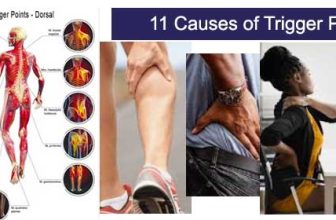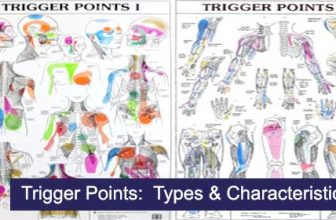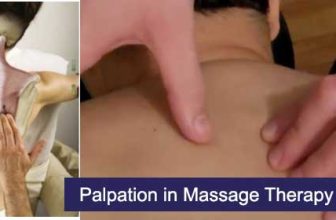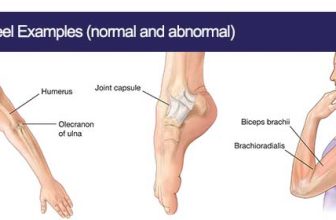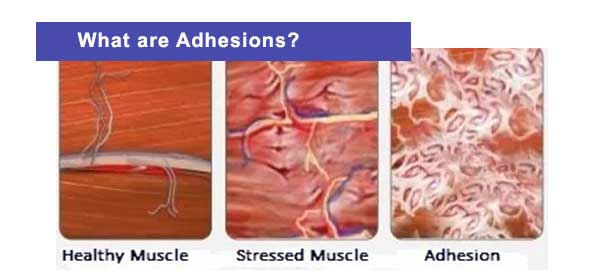
What are Muscle Adhesions?
As a massage client, you may have heard your therapist mention the term “adhesions.” But what exactly are adhesions, and how do they impact your body? In the context of massage therapy and anatomy, adhesion refers to the abnormal sticking together of soft tissues, typically between layers of muscle fibers or between muscle and other tissues. Adhesions are fibrous bands of scar-like tissue that can form as a result of inflammation, injury, surgery, or repetitive motion.
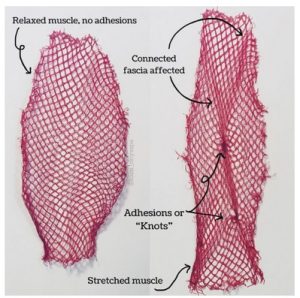 Definition of Adhesion
Definition of Adhesion
Adhesions are fibrous bands of scar tissue that can develop between layers of soft tissues, such as muscles, tendons, and ligaments. They form in response to injury, inflammation, surgery, or repetitive stress, creating a sticky connection between normally separate structures.
Key points about Adhesions:
Adhesion Formation
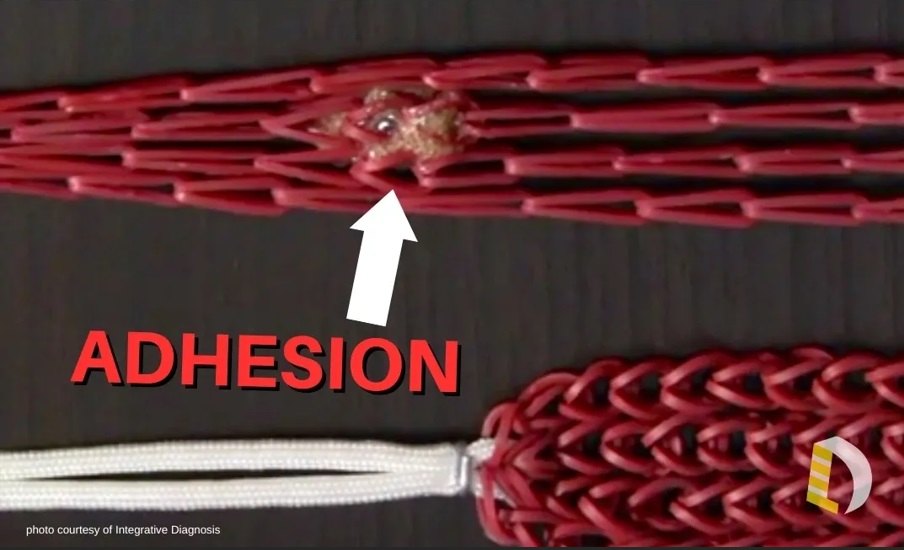
Adhesions can form when there is damage to soft tissues, such as muscles, tendons, or ligaments. This damage triggers an inflammatory response, leading to the formation of scar tissue as the body attempts to heal. If the healing process is not optimal, fibrous adhesions may develop, causing tissues that are normally separate to stick together.
Causes of Adhesions
Adhesions can result from various factors, including surgery, trauma, chronic inflammation, or overuse of specific muscles or joints. Poor posture and improper body mechanics can also contribute to the formation of adhesions.
Injury, trauma or repetitive strain on soft tissues can trigger the formation of adhesions. Post-surgical healing may lead to the development of scar tissue and adhesions.
Conditions like arthritis or prolonged (chronic) inflammation can contribute to adhesion formation. Repeated use (overuse) of specific muscles or joints without adequate recovery can lead to adhesions.
Poor posture and incorrect body alignment can contribute to the development of adhesions. Lack of movement and sedentary lifestyles or prolonged periods of inactivity may increase the risk of adhesion formation.
Effects of Adhesions
Adhesions can limit the normal movement of muscles and other soft tissues. They may reduce flexibility, increase stiffness, and contribute to pain or discomfort. In the context of massage therapy, adhesions are often targeted to improve tissue mobility and reduce tension.
How Do Adhesions Affect Your Body?
- Adhesions cause limited mobility. Adhesions can restrict the natural movement of muscles and joints, leading to reduced flexibility and increased stiffness.
- Adhesions also cause tension and discomfort. The fibrous nature of adhesions can contribute to localized tension and pain, affecting your comfort and range of motion.
- Adhesions have a negative impact on your range of motion and posture. Adhesions may alter the alignment of muscles and joints, potentially influencing your posture and body mechanics.
Adhesion Locations
Adhesions can form within muscle fibers, between muscles, around joints, or between muscles and other structures like tendons or ligaments.
Adhesions and Massage Therapy
Massage therapy enhances blood circulation, promoting the delivery of oxygen and nutrients to affected tissues. Improved circulation aids in the breakdown of adhesions and supports the body’s natural healing process.
Massage therapists often use techniques like friction and deep tissue massage to address adhesions. The goal is to break down the fibrous tissue, improve blood circulation, and promote the realignment of muscle fibers.
Massage therapists use friction to break down adhesions and improve tissue mobility.
Applying deeper pressure targets underlying layers, addressing tension and promoting muscle realignment.
Incorporating stretching into massage sessions helps improve flexibility and reduce adhesion-related stiffness. Also giving homecare instructions on how to stretch the affected muscles will help.
In some cases, severe adhesions may require more evaluation and treatments. Evaluation may include imaging studies, such as MRI or ultrasound, to assess the extent and location of adhesions. Treatments may include physical therapy, myofascial release or surgical intervention to break up or remove the adhesions.
What to Expect During a Massage Session to address Adhesions
Discuss any specific areas of discomfort or limited mobility with your massage therapist.
You may experience some discomfort during deep tissue work, but communication is key to ensure the pressure is within your comfort zone. You may also experience kickback pain a day after the massage.
Drink plenty of water after your massage to help flush out toxins released during the session.
Preventing Adhesions
- Stay Active. Incorporate regular movement and exercise into your routine to promote healthy muscle function.
- Maintain Good Posture. Be mindful of your posture, especially during prolonged periods of sitting or standing.
- Stretch Regularly. Include stretching exercises to maintain flexibility and prevent muscle imbalances.
